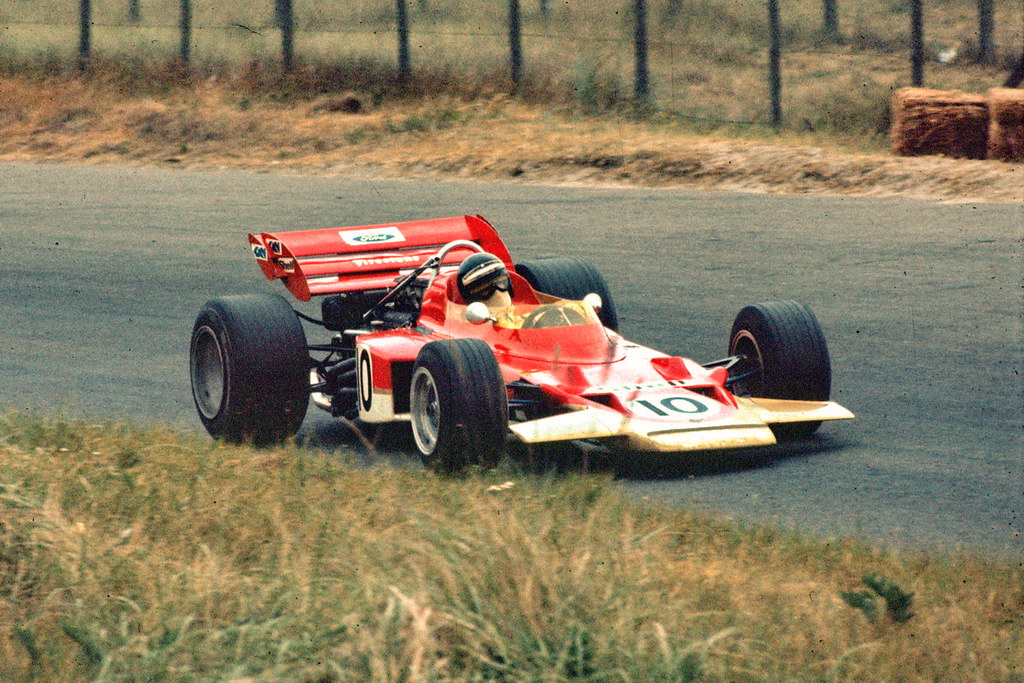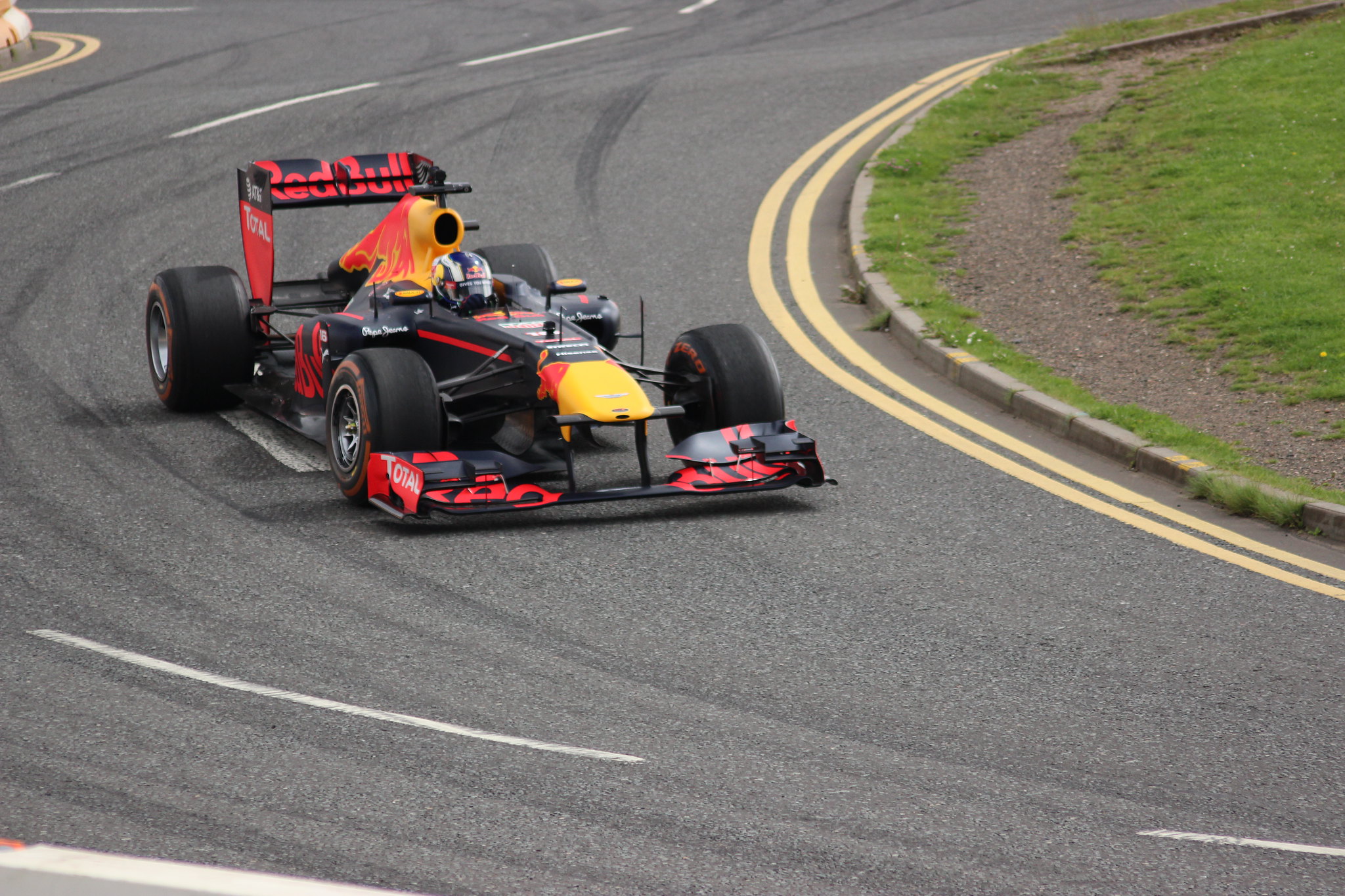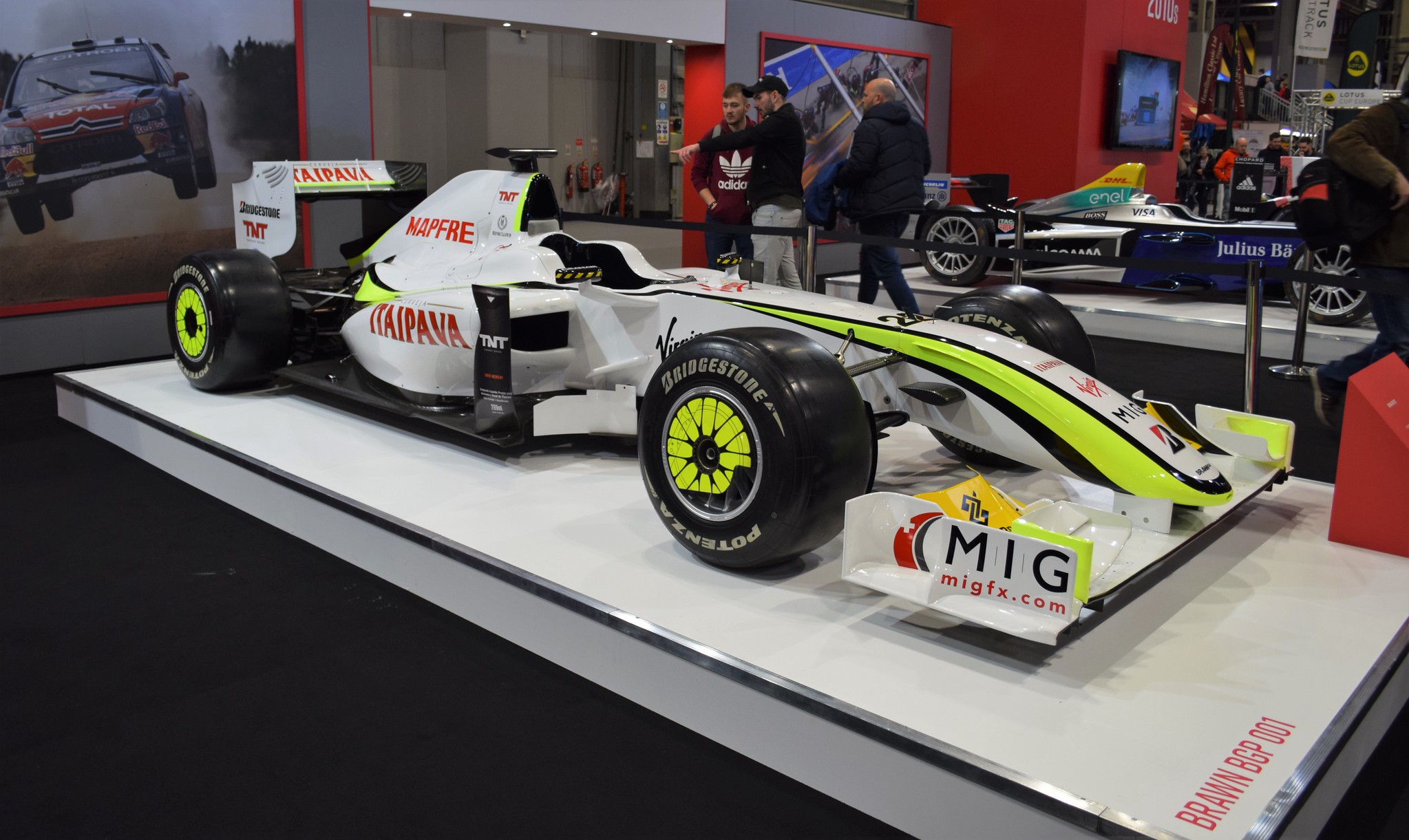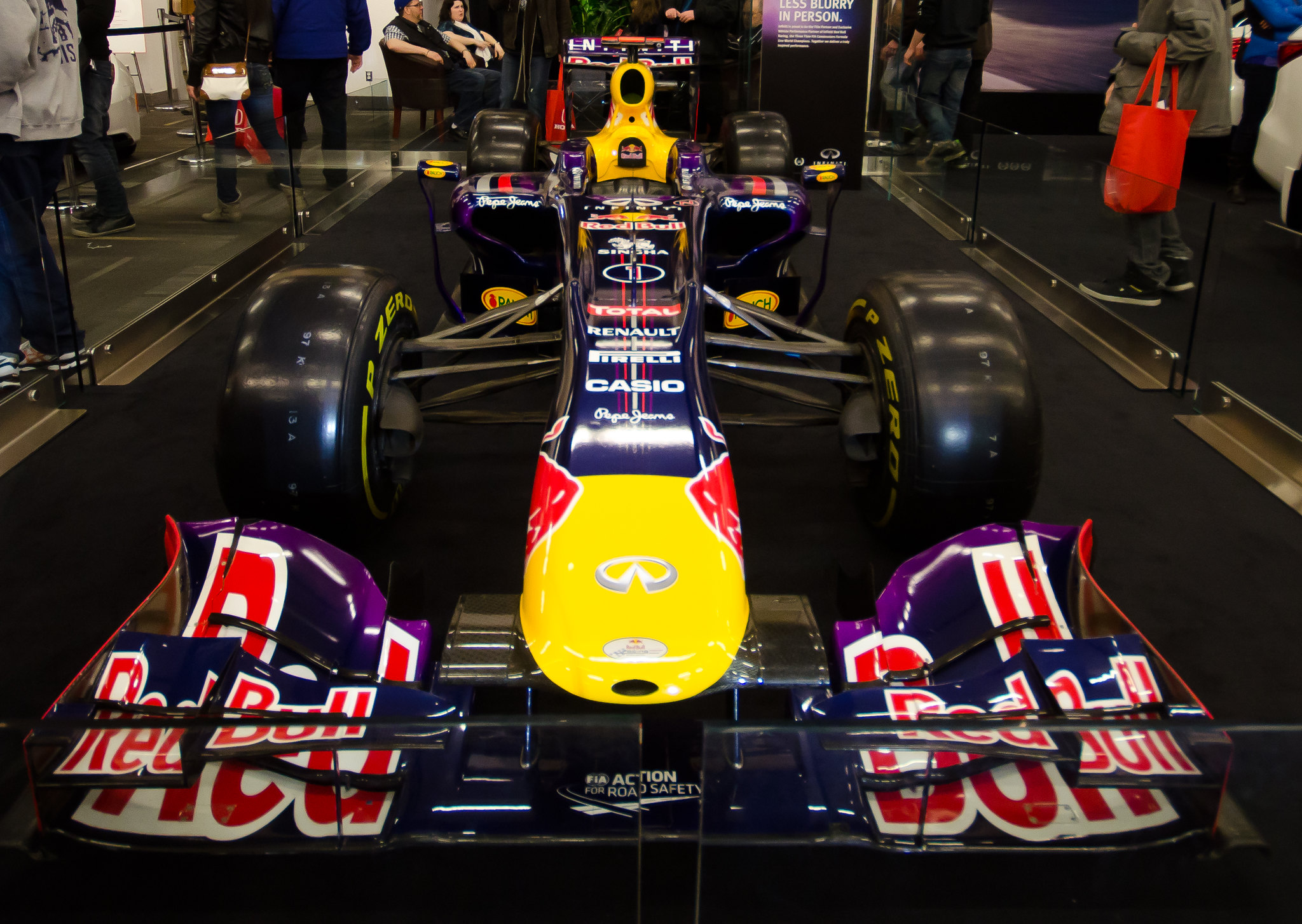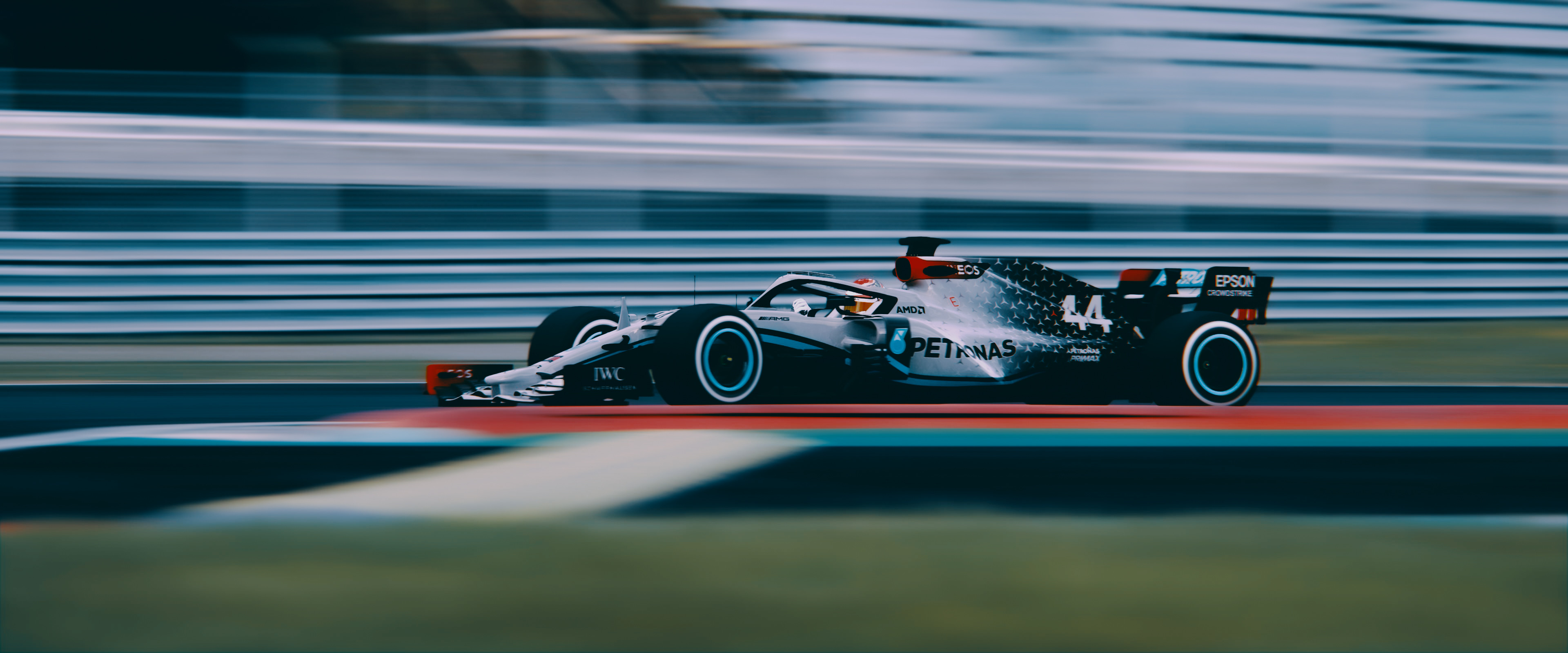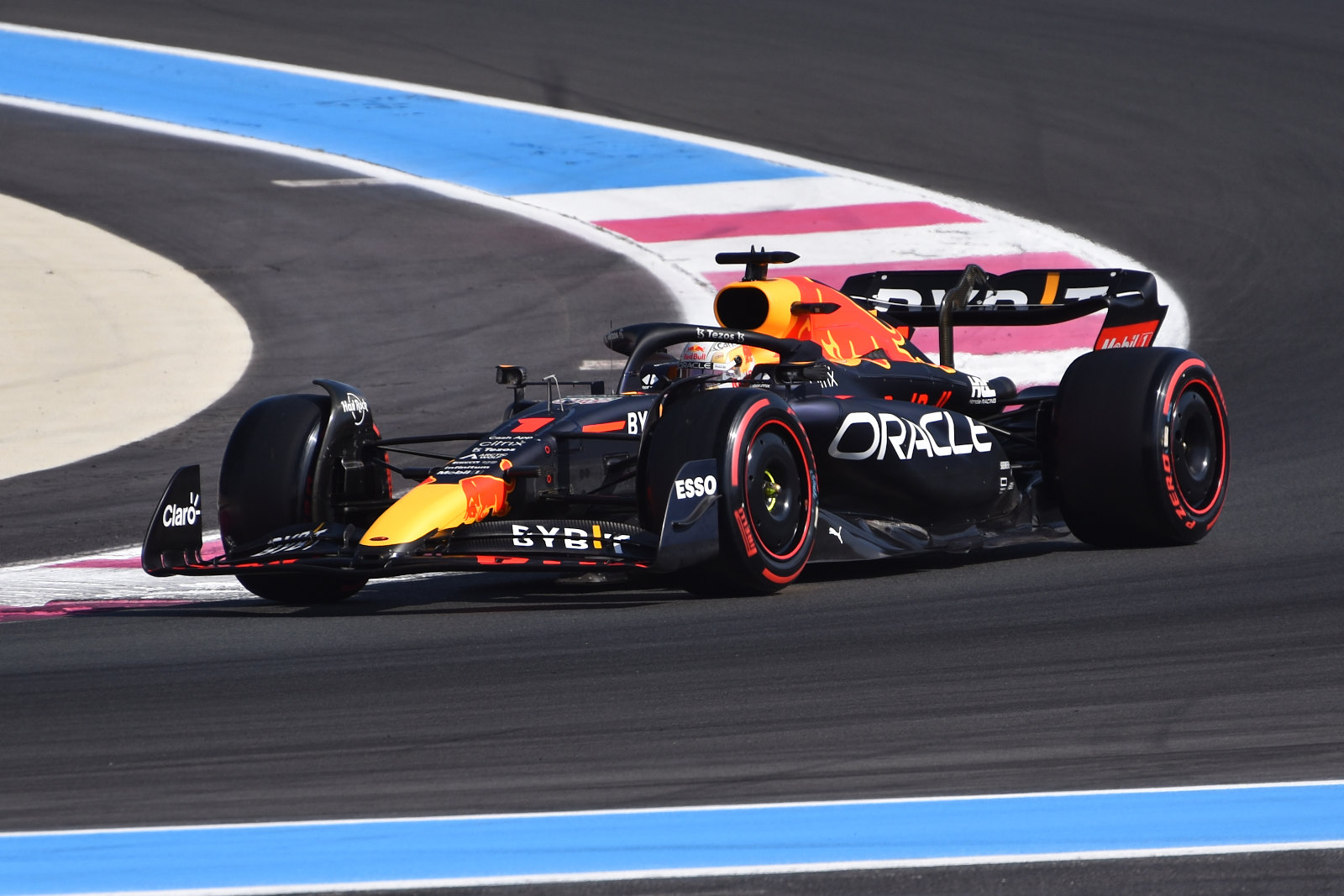The Best Race Cars Ever Made
When it comes to motorsport, few affiliations are as thrilling and innovative as Formula 1. F1 is the top tier of racing and its design teams continue to set new standards in the world of cars.
For their incredible engineering and beautiful designs, these are 15 of the greatest Formula 1 cars to ever hit the track.
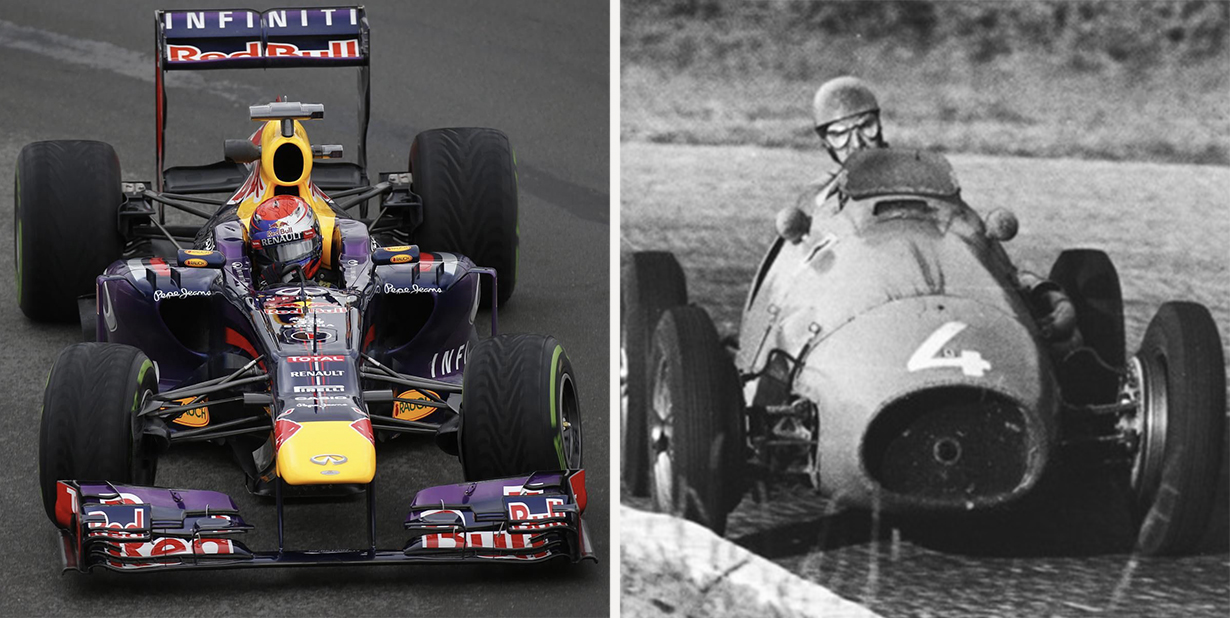
Cooper T51
Formula One was still young when the British Cooper team entered the foray. The father and son duo became pioneers in the game when they designed one of the first rear-engine racing cars: the Cooper T51.
The sleek design, long nose, and forward driver position would inspire future generations of F1 hot rods.
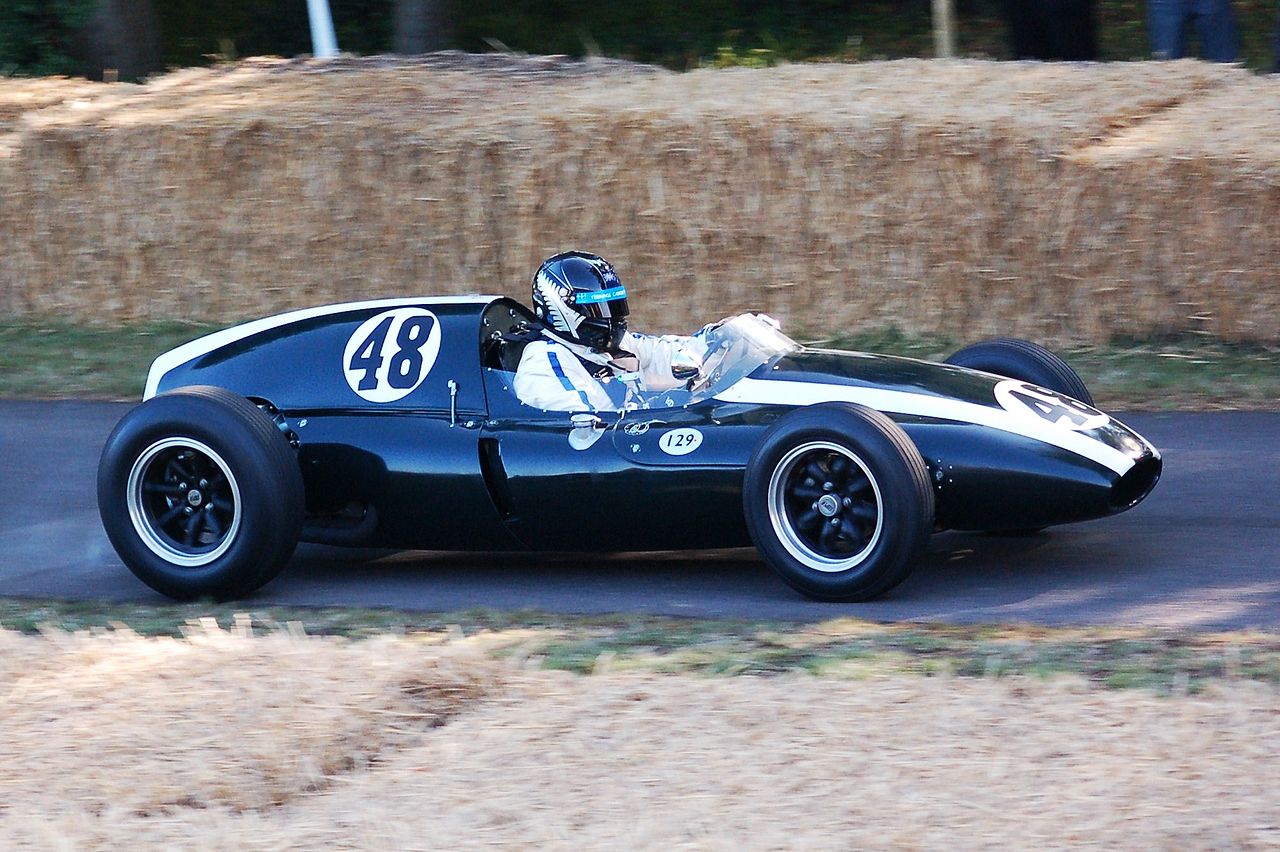 Bahnfrend, CC BY-SA 3.0, Wikimedia Commons
Bahnfrend, CC BY-SA 3.0, Wikimedia Commons
Cooper T51 (cont’d)
Racing icons Jack Brabham and Bruce McLaren drove the T51, and in its heyday, it was one of the most popular Formula 1 cars.
The T51 sported a Coventry Climax four-cylinder engine and a four-speed Citroen gearbox. Later models used Maserati and Ferrari engines.
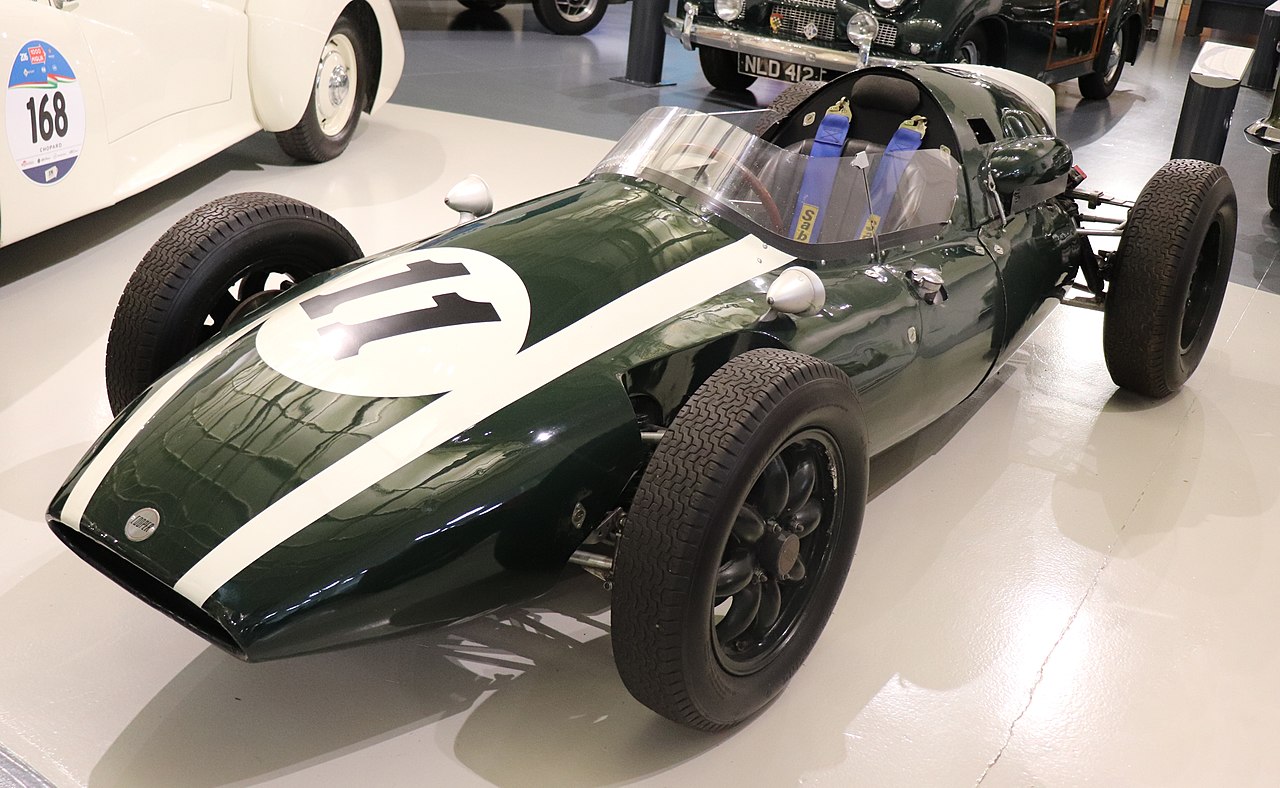 Vauxford, CC BY-SA 4.0, Wikimedia Commons
Vauxford, CC BY-SA 4.0, Wikimedia Commons
Ferrari Tipo 500
Designed by Aurelio Lampredi, this incredible hot rod is actually a Formula 2 race car. In 1952, the World Championship was run according to Formula 2 specifications, so Ferrari constructed the Tipo to meet the parameters.
The car went on to win two Drivers’ Championships and two Constructors’ Championships.
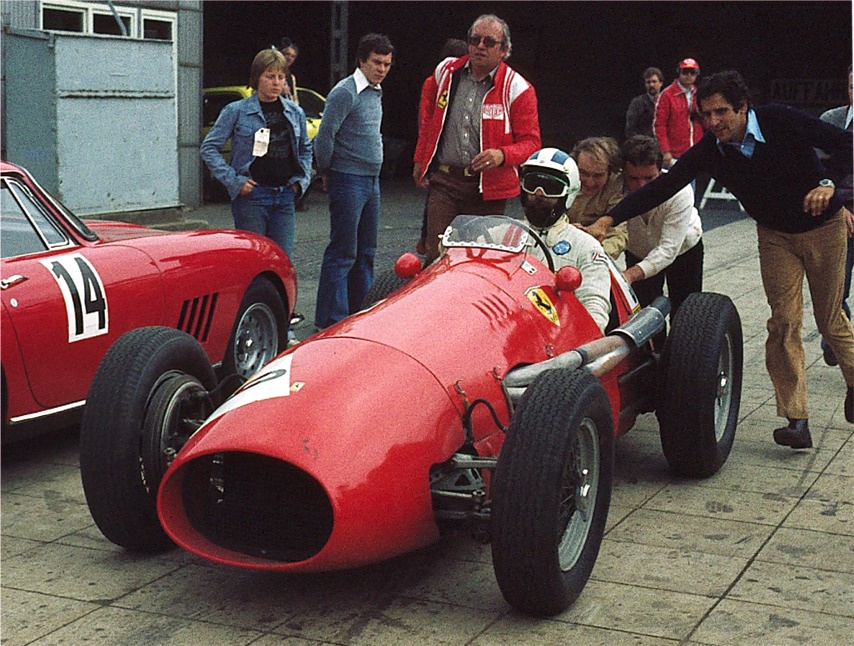 Lothar Spurzem, CC BY-SA 2.0 DE , Wikimedia Commons
Lothar Spurzem, CC BY-SA 2.0 DE , Wikimedia Commons
Ferrari Tipo 500 (cont’d)
The Tipo 500 is recognizable for its tubular frame. It also featured a double-wishbone suspension in the front and De Dion axle suspension in the rear.
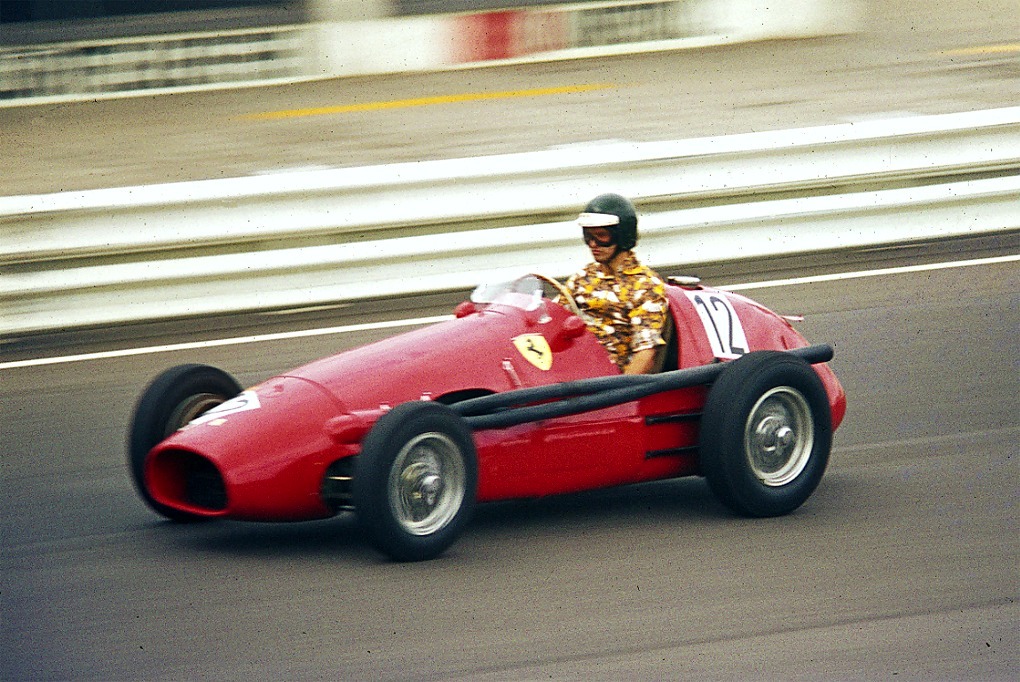 Unknown Author, Wikimedia Commons
Unknown Author, Wikimedia Commons
Lotus 72
The Lotus 72 debuted in the 1970 F1 season, and was created by Maurice Philippe and Colin Chapman. It was an innovative design that featured inboard brakes and side-mounted radiators—before this it was common for the radiators be nose-mounted.
The wedge-like shape of the car was also pioneering, with the aerodynamics of the design contributing to higher speeds. The Lotus 72 was powered by a naturally aspirated V8 that could crank out more than 440 horsepower.
Lotus 72 (cont’d)
From 1970 to 1975, this car set the standard for Lotus. With it, the company won three Constructors’ Championships and two Drivers’ Championships’.
Overall, the Lotus 72 won 20 races and made the podium 39 times.
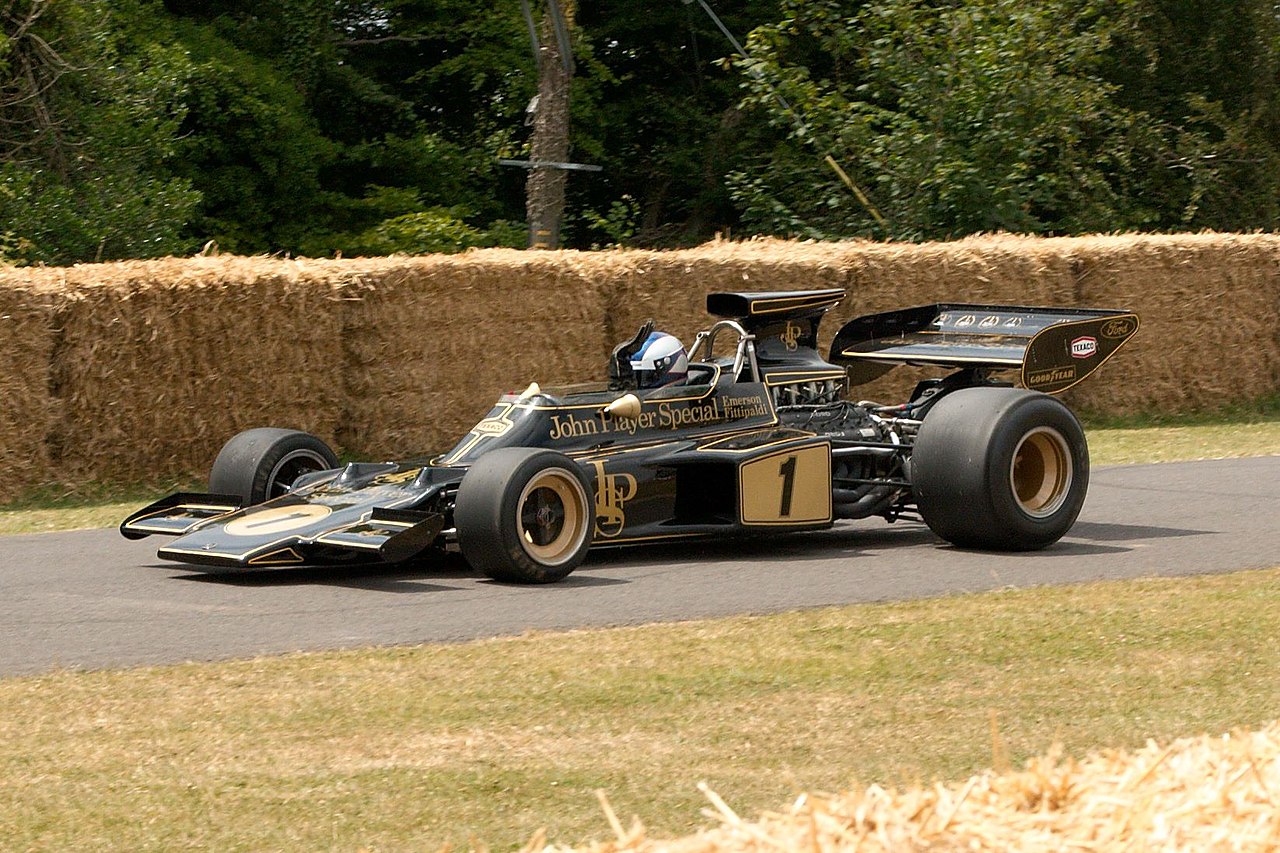 Andrew Basterfield, CC BY-SA 2.0 , Wikimedia Commons
Andrew Basterfield, CC BY-SA 2.0 , Wikimedia Commons
McLaren MP4/4
This speed demon was one of McLaren’s most successful Formula 1 cars ever—but they did have a little help from Honda. The MP4/4 was outfitted with Honda’s RA168E turbocharged V-6 engine, which could produce up to 700 horsepower.
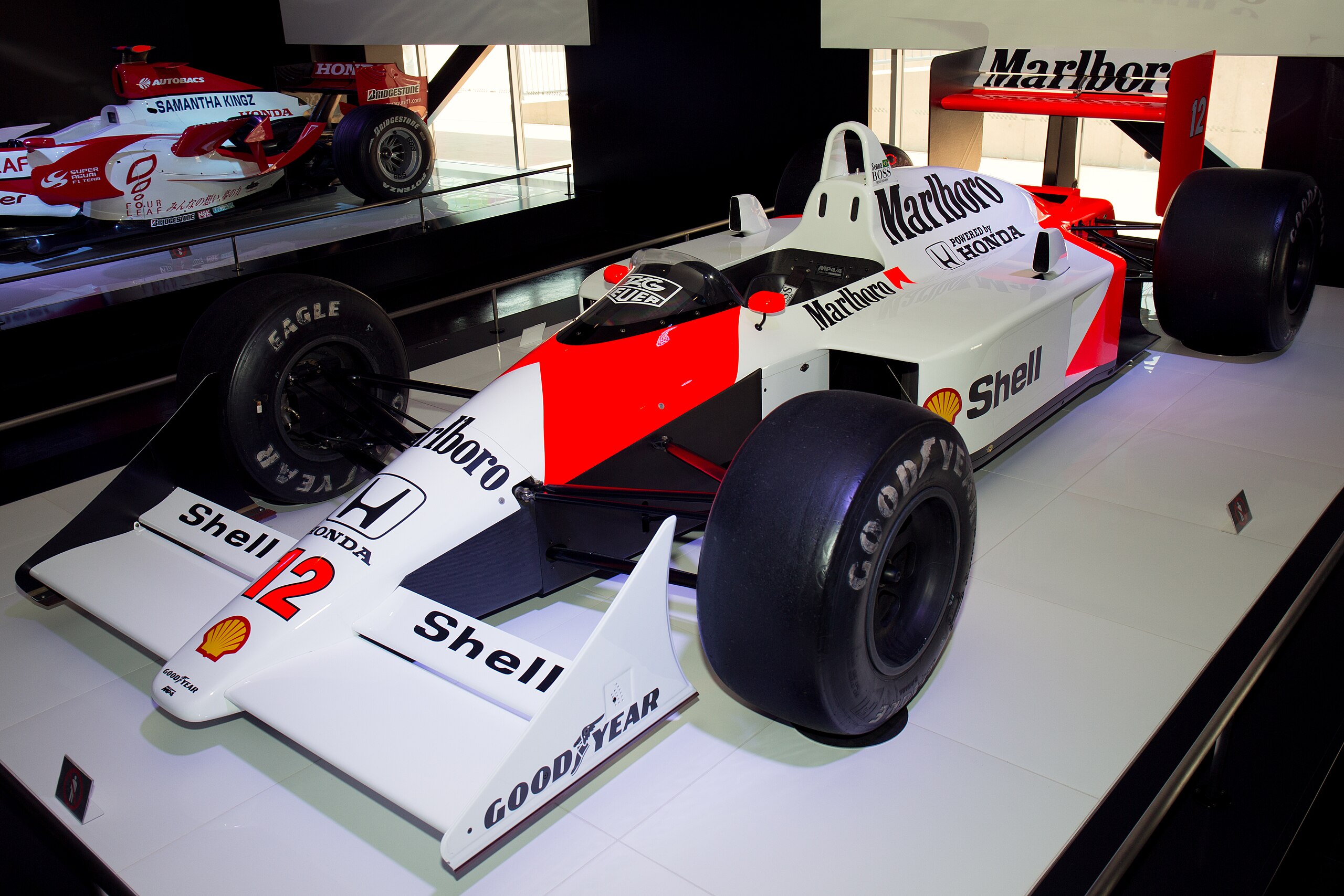 Morio, CC BY-SA 3.0, Wikimedia Commons
Morio, CC BY-SA 3.0, Wikimedia Commons
McLaren MP4/4 (cont’d)
The MP4/4 competed in the 1988 F1 season, driven by Alain Prost and Ayrton Senna. It won all but one race that season and is still considered one of the most dominant F1 cars to hit the track.
Williams FW14/B
The FW14/B debuted in 1992 Formula 1 season. Nigel Mansell went on to drive the car in the Drivers’ Championship, and broke records when it won 9 races that season.
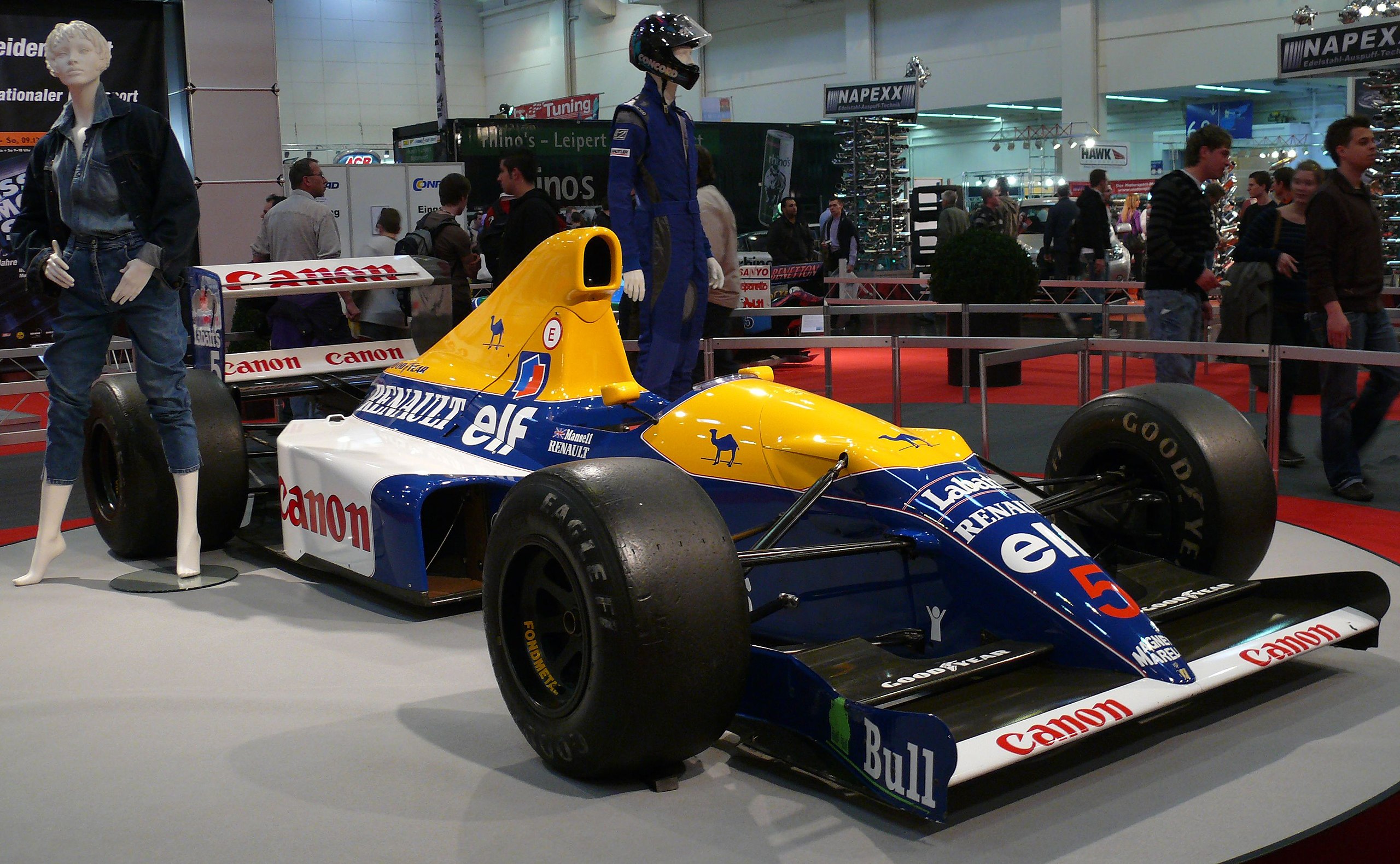 Stahlkocher, CC BY-SA 3.0 , Wikimedia Commons
Stahlkocher, CC BY-SA 3.0 , Wikimedia Commons
Williams FW14/B (cont’d)
The FW14/B was outfitted with a powerful Renault V-10 engine, that could produce more than 700 horsepower.
Williams also gave it a state-of-the-art active suspension system, which was an upgrade from the pushrod and inboard spring suspension of the previous season.
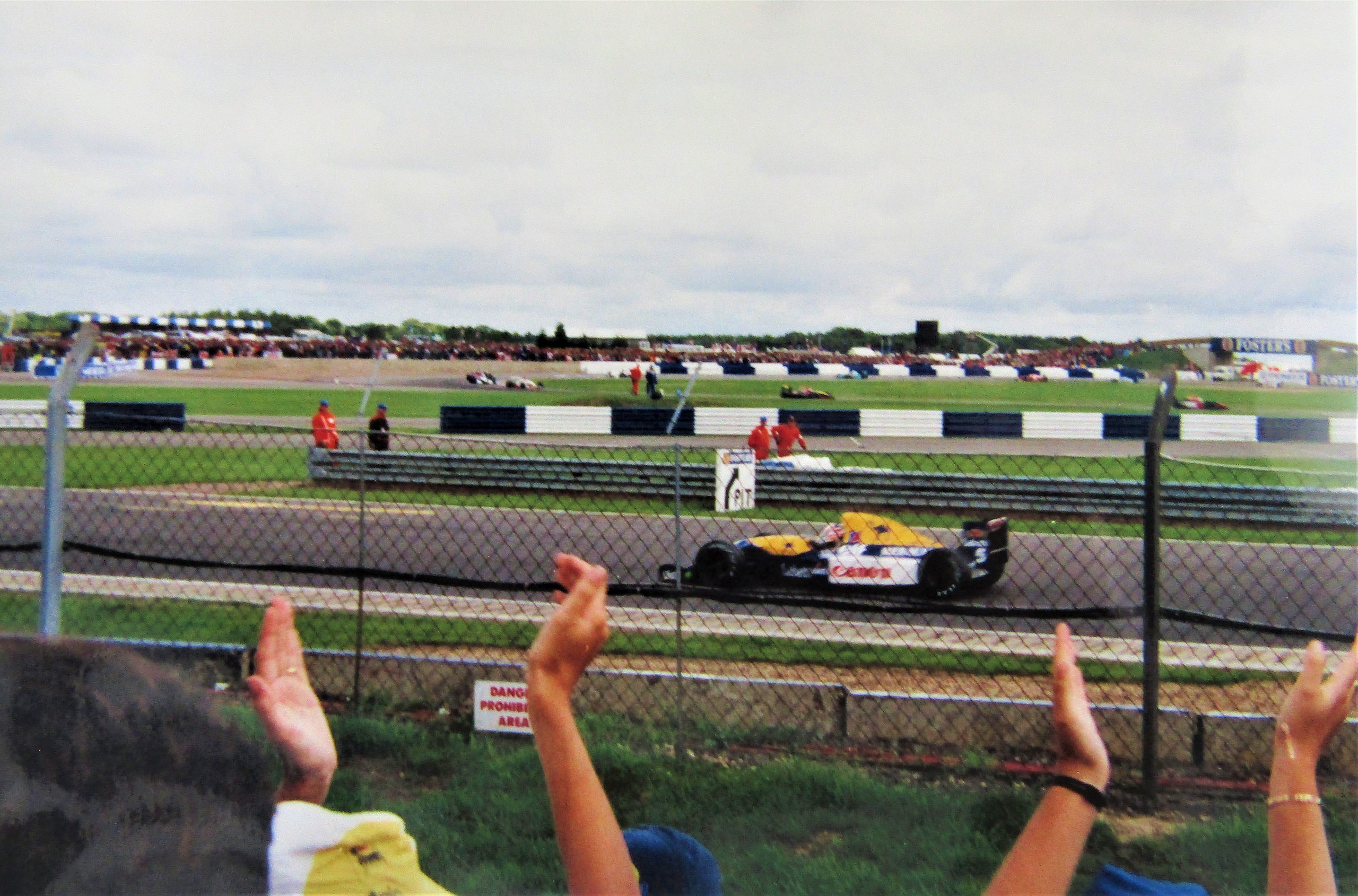 Kolforn , CC BY-SA 4.0, Wikimedia Commons
Kolforn , CC BY-SA 4.0, Wikimedia Commons
Williams BMW FW26
The BMW FW26 is probably the last great car to be designed by Frank Williams’ team. During the 2004 season, the Ferrari F2004 dominated the circuit, but the BMW FW26 certainly gave it a run for its money.
During qualifying, Juan Pablo Montoya pushed this car to an average 162.95 mph. At the time, it was an F1 lap record, but it wasn't considered official since it didn’t happen during a race.
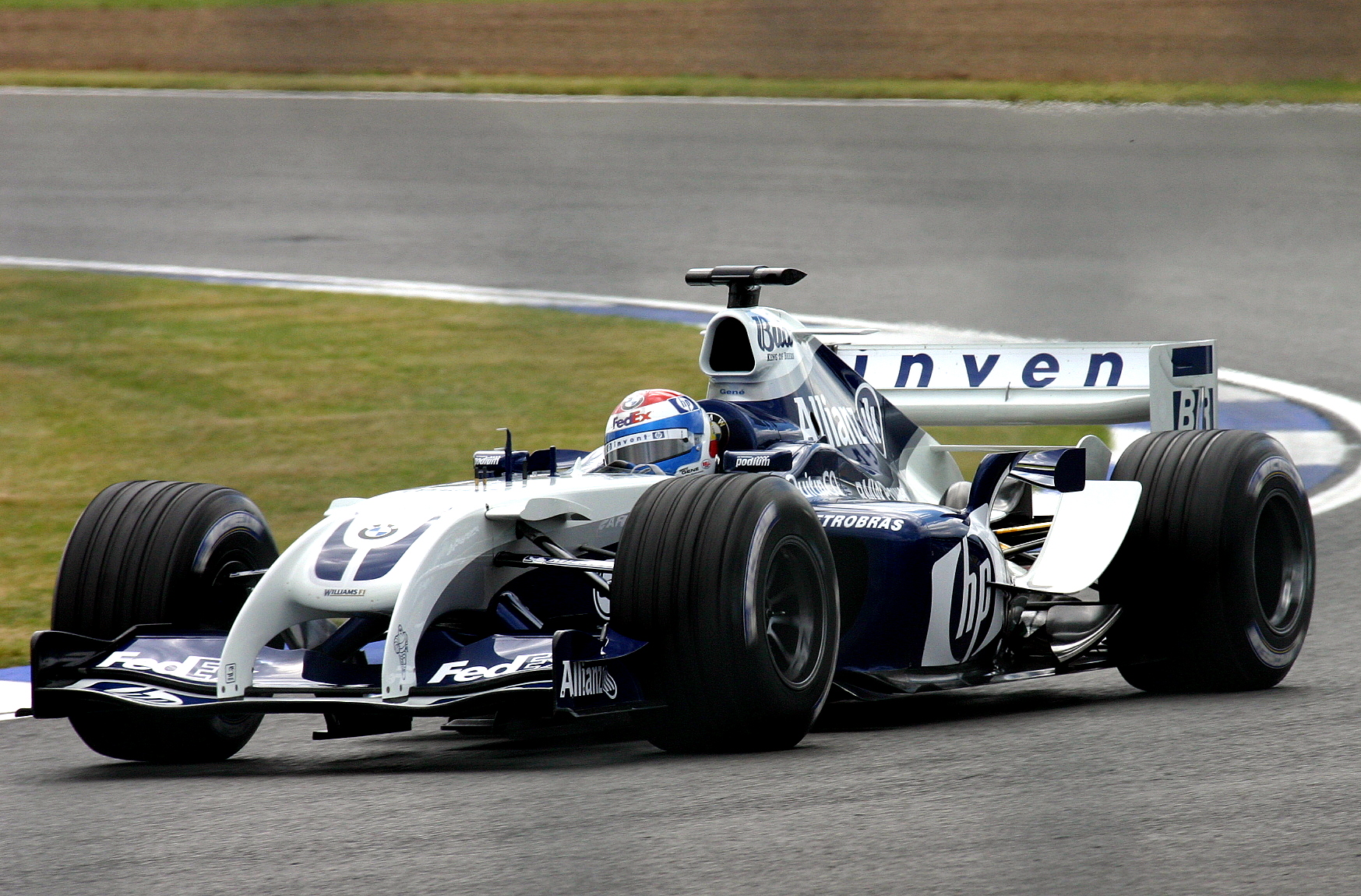 Martin Lee, CC BY-SA 2.0 , Wikimedia Commons
Martin Lee, CC BY-SA 2.0 , Wikimedia Commons
Williams BMW FW26 (cont’d)
Regardless of lack of recognition for its record-breaking speed, the car did gain renown for its distinctive looks. The two vertical spars on each side of the nosecone made it look like it had tusks and earned it the nickname “walrus nose”.
In reality, those spars maximized airflow and contributed to the car’s success during testing. Sadly, those results couldn’t live up to the pressures of the F1 circuits but the car did put up a valiant effort.
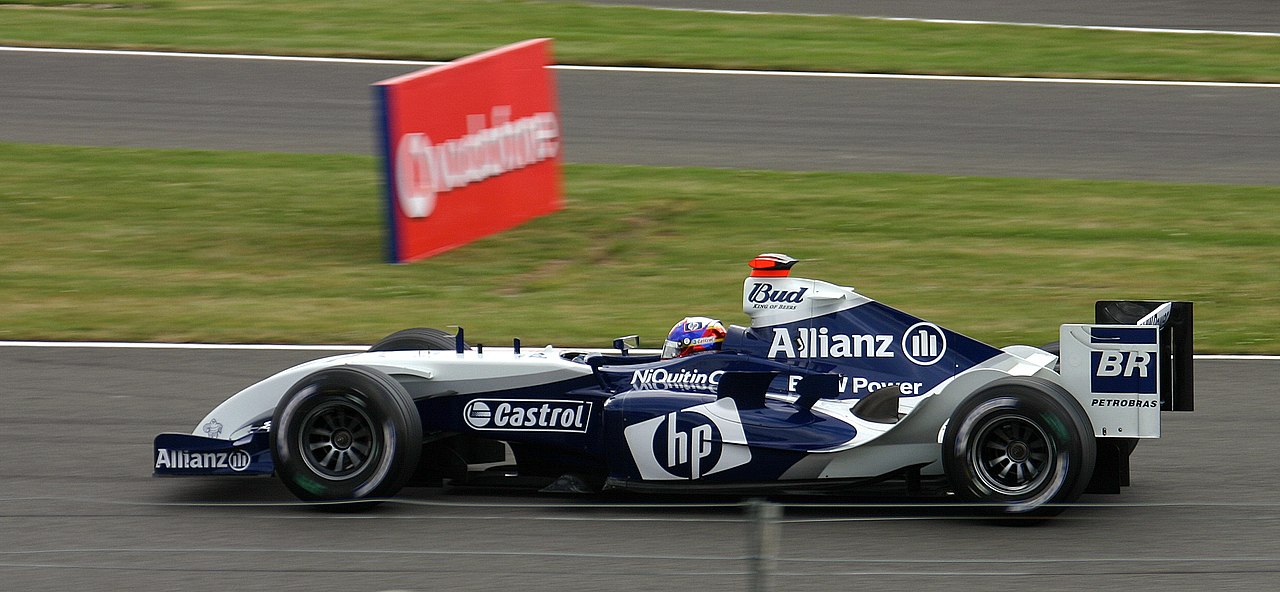 Martin Lee, CC BY-SA 2.0 , Wikimedia Commons
Martin Lee, CC BY-SA 2.0 , Wikimedia Commons
Red Bull RB7
The RB7 is one of the most dominant F1 cars of all time.
Red Bull was already crushing the competition with Sebastian Vettel and Mark Webber as their drivers, and the RB7 continued that winning streak, helping Vettel secure 12 wins and 18 out of 19 pole positions in 2011.
Red Bull RB7 (cont’d)
This king of the track was powered by a naturally-aspirated Renault V8 engine that could crank out 750 horsepower at 18,000 rpm.
It also featured a 7-speed, semi-automatic transmission as well as the KERS kinetic energy recovery system, which gave it a boost in power when needed.
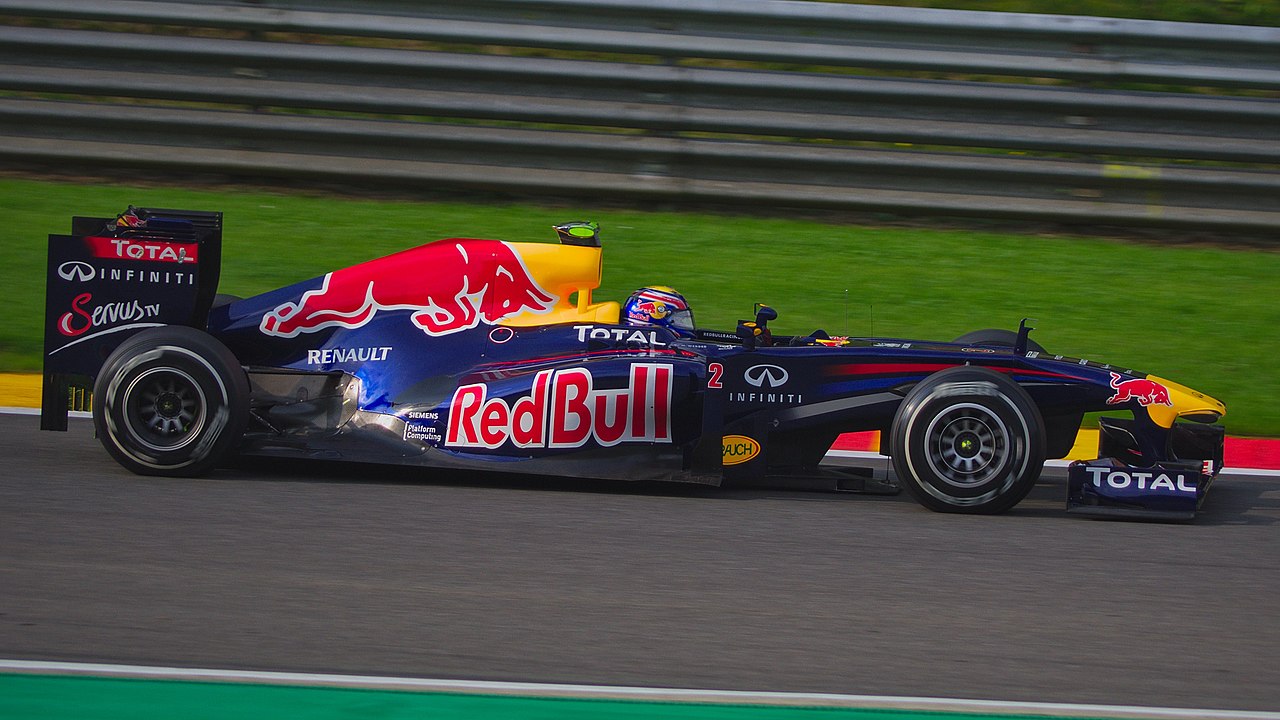 Rob Oo , CC BY 2.0, Wikimedia Commons
Rob Oo , CC BY 2.0, Wikimedia Commons
Benetton B195
This hot rod was designed by a legend in Formula 1: Ross Brawn. The B195 was powered by a Renault V-10 that could crank out more than 675 horsepower.
The car went on to win the 1995 F1 World Championship.
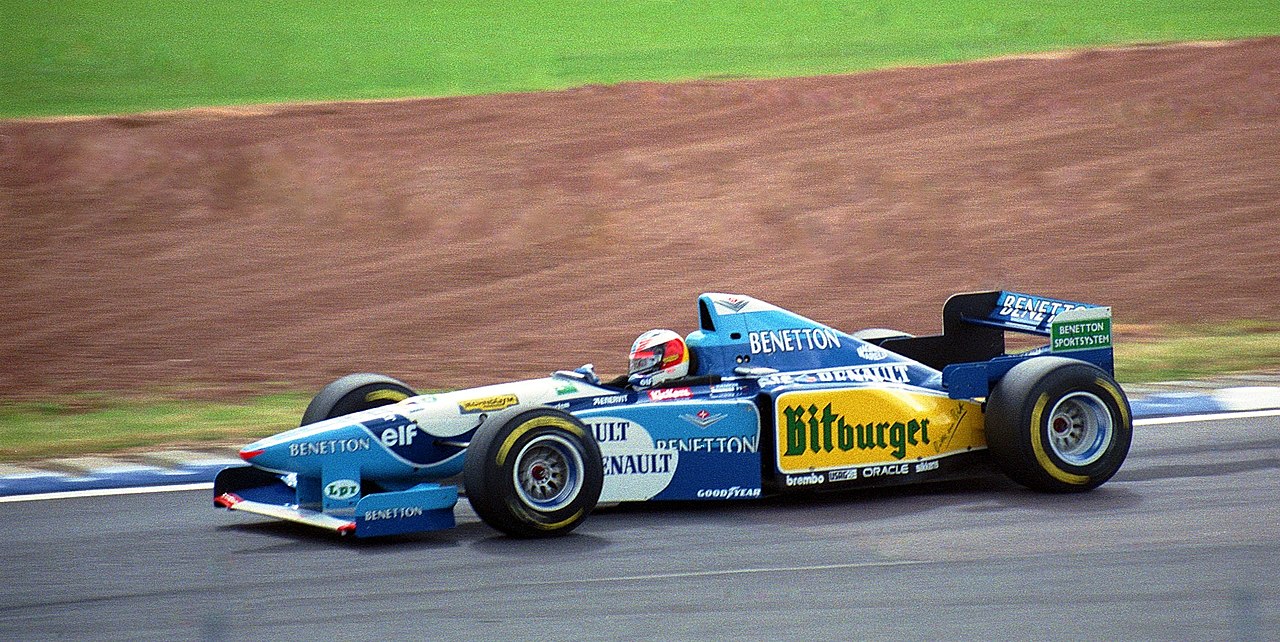 Martin Lee, CC BY-SA 2.0 , Wikimedia Commons
Martin Lee, CC BY-SA 2.0 , Wikimedia Commons
Benetton B195 (cont’d)
In addition to being a big win for Benetton, the B195’s debut was also an iconic win for Michael Schumacher as it was his first Drivers’ World Championship title.
The B195 proved to be a successful car, winning 11 out of 17 races, and achieving 4 pole positions and 8 fastest lap awards.
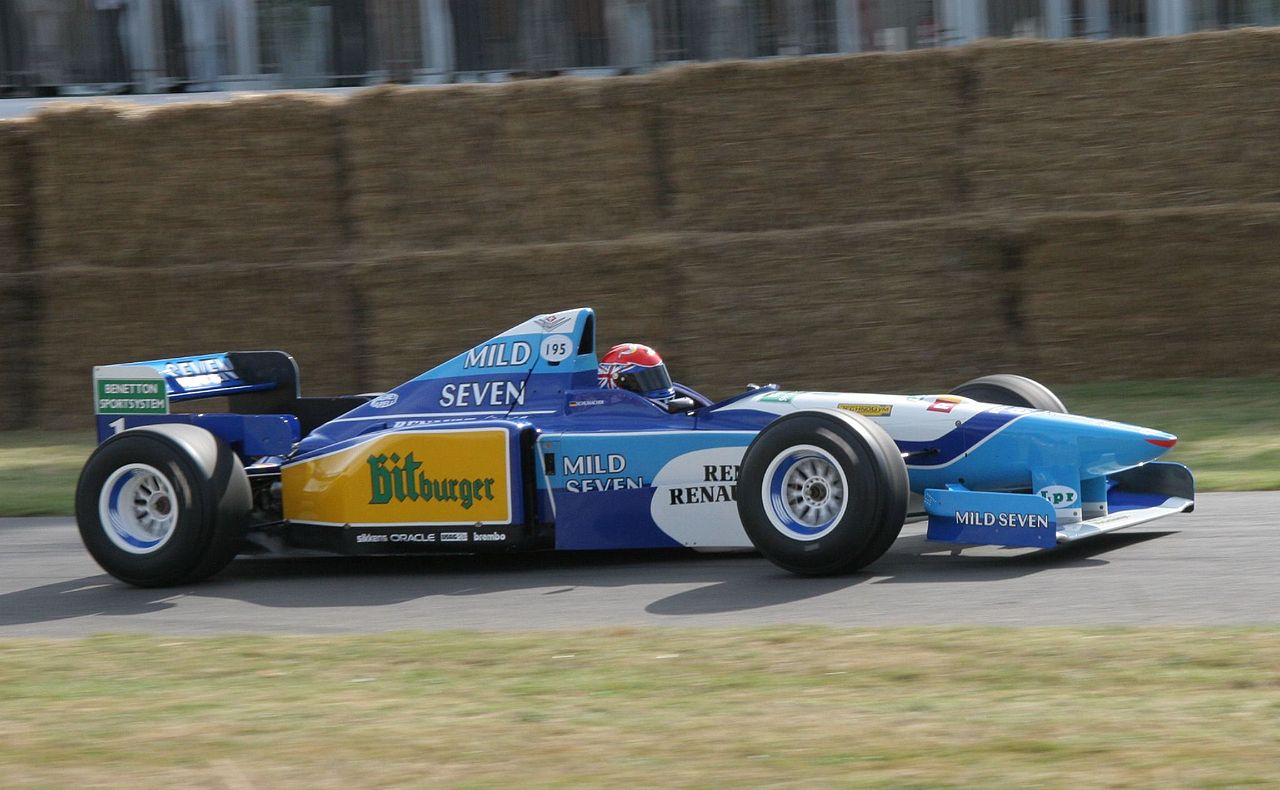 Brian Snelson, CC BY 2.0 , Wikimedia Commons
Brian Snelson, CC BY 2.0 , Wikimedia Commons
Ferrari F2002
When it comes to iconic F1 cars, the F2002 is always top of the list. It’s also one of the most successful F1 cars ever. The F2002 was created by Scuderia Ferrari Marlboro and competed in the 2002 F1 World Championship.
This speed demon featured a naturally aspirated V-10 engine as well as a newly designed 7-speed automatic gearbox.
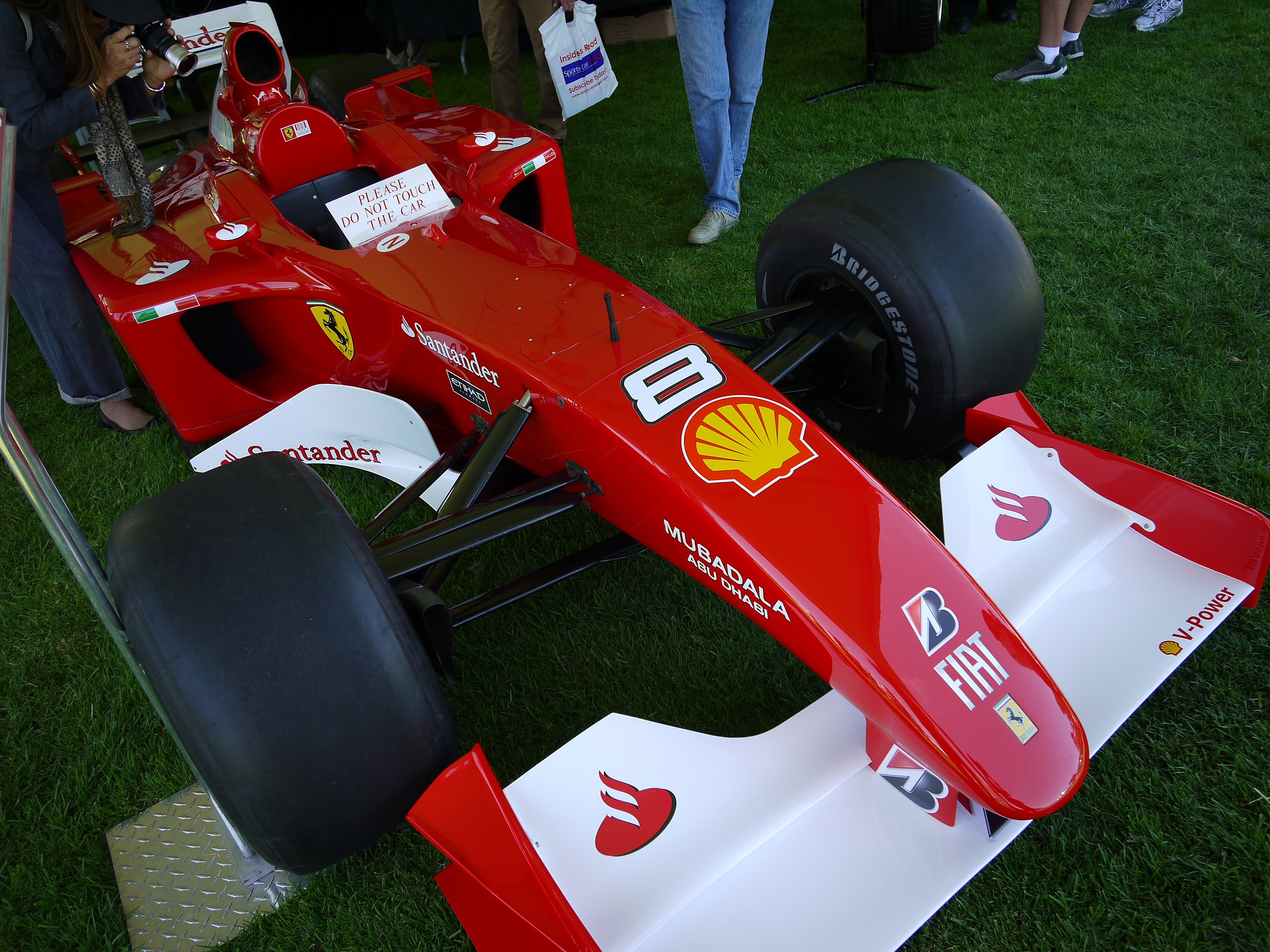 Craig Howell, CC BY 2.0, Wikimedia Commons
Craig Howell, CC BY 2.0, Wikimedia Commons
Ferrari F2002 (cont’d)
With these innovative features, the F2002 could crank out 835 horsepower at over 17,000 rpm. During the 2002 and 2003 seasons, this car secured 15 wins, 28 podiums, 11 pole positions, and 15 fastest lap awards.
It also won the Drivers’ and Constructors’ Championships.
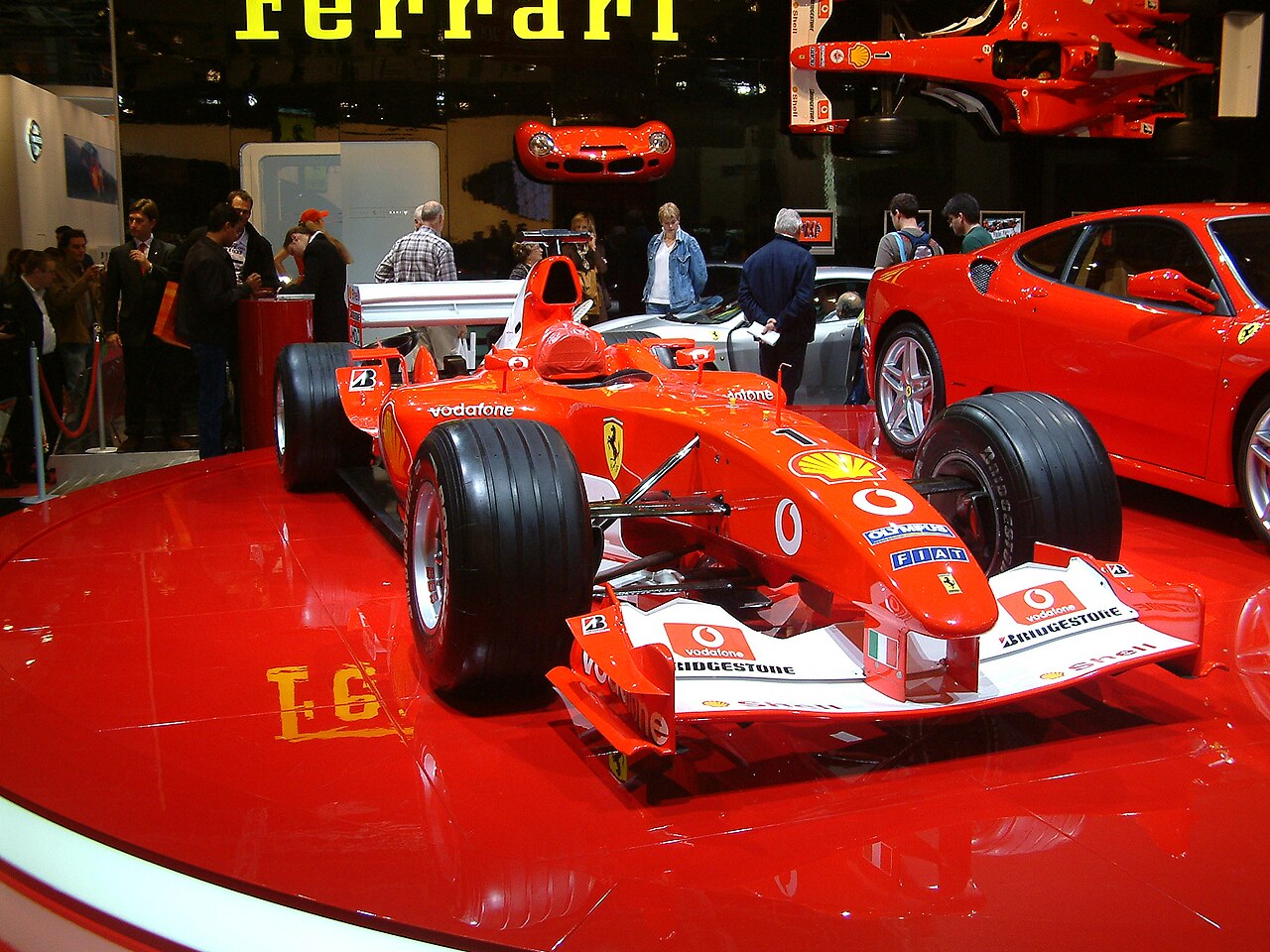 Tim Dobbelaere, CC BY-SA 2.0 , Wikimedia Commons
Tim Dobbelaere, CC BY-SA 2.0 , Wikimedia Commons
Brawn BGP 001
Brawn is one of the most unique teams in Formula 1—perhaps that’s also what’s made them so successful. In 2009, F1 introduced new regulations that seemed to trip up the competition.
Brawn, on the other hand, had no trouble designing something to meet the parameters, and went on to win both the Constructors’ and Drivers’ Championships that year.
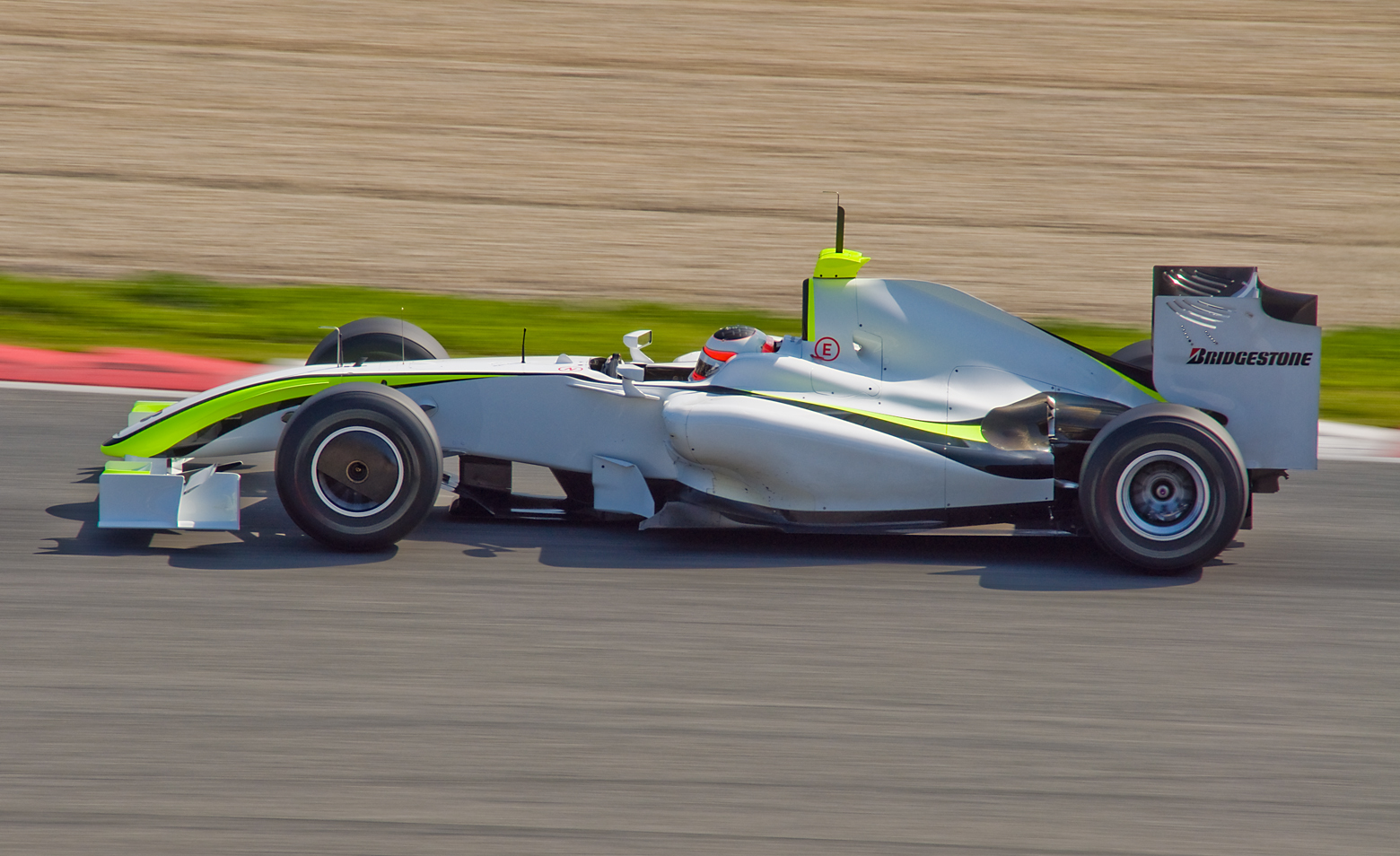 Jose Mª Izquierdo Galiot, CC BY 2.0, Wikimedia Commons
Jose Mª Izquierdo Galiot, CC BY 2.0, Wikimedia Commons
Brawn BGP 001 (cont’d)
Part of the BGP 001’s innovative tech included a pushrod activated, wishbone suspension and a powerful 2.4-liter, naturally aspirated V-8 engine from Mercedes-Benz.
The engine could produce 750 horsepower and was featured in several other cars that hit the track that year. Brawn, however, made the most of the engine with their state-of-the-art aerodynamics.
Red Bull RB9
Red Bull has carved out an elite lane for itself with some of the most iconic race cars in recent history, including the RB9.
The RB9 was designed for the 2013 Formula 1 season and was powered by a Renault engine that could crank out more than 750 horsepower.
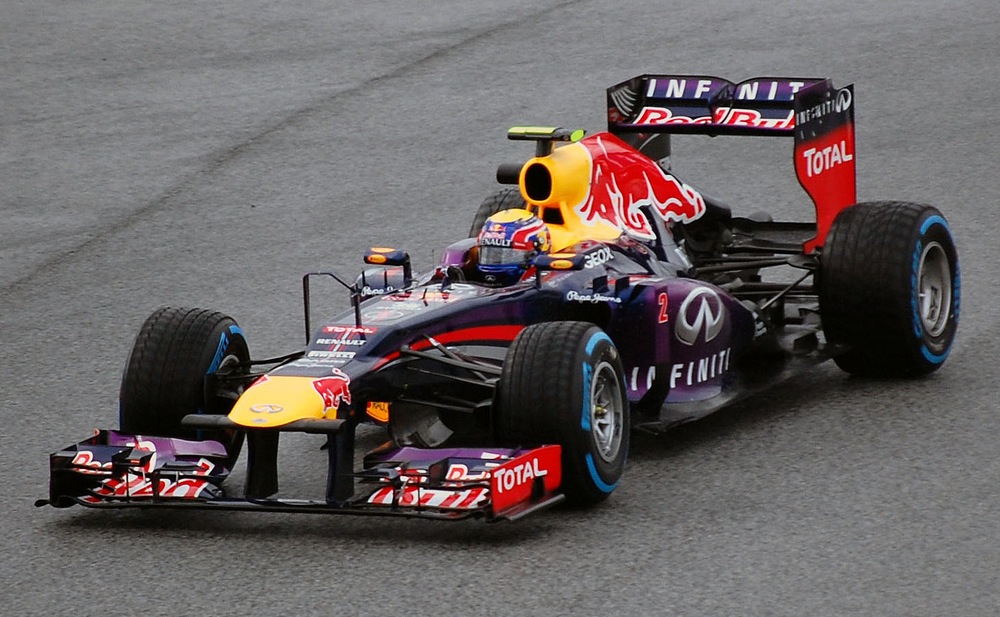 Kevin Rodriguez Ortiz, CC BY 2.0, Wikimedia Commons
Kevin Rodriguez Ortiz, CC BY 2.0, Wikimedia Commons
Red Bull RB9 (cont’d)
By the time the 2013 season rolled around, Red Bull had been on a winning streak. But the competition was steep that year, and the RB9 put in the work to keep them at the top spot.
The car placed 1st and 6th in the opening race, then gained fame when Sebastian Vettel used it to win 9 consecutive Grand Prix and his 4th World Championship.
Ferrari SF70H
While the years after 2010 saw Mercedes and Red Bull dominating the F1 circuits, Ferrari was always a strong competitor, especially with the SF70H.
This car was a top contender in the Constructors’ Championship, especially driven by champion drivers Kimi Räikkönen and Sebastian Vettel.
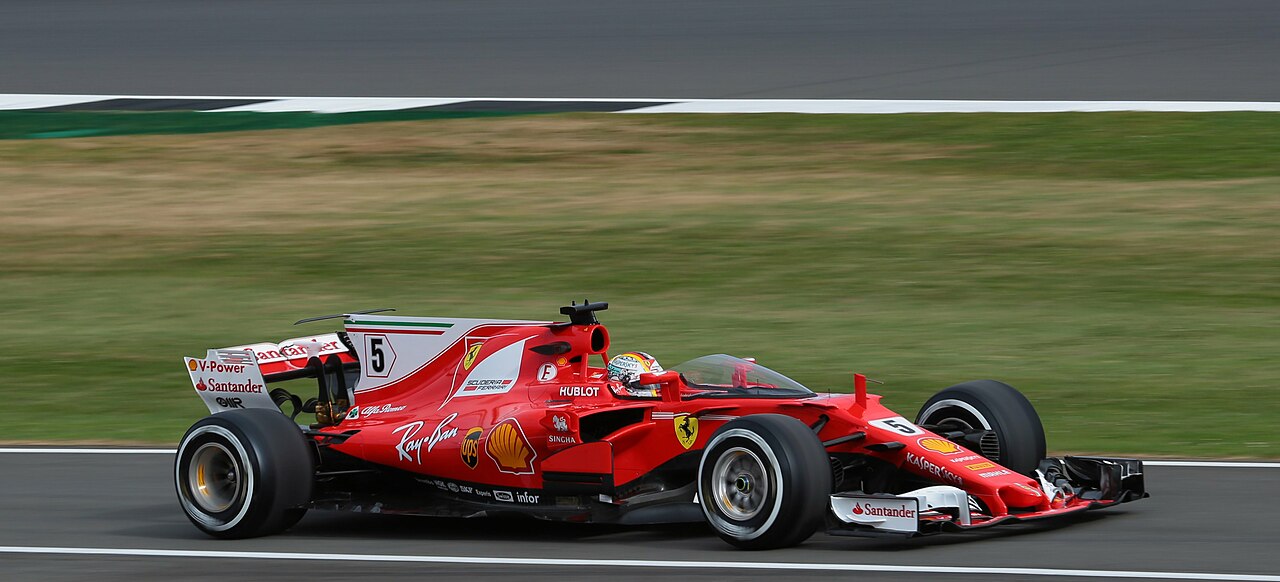 Stephen Grimes, CC BY-SA 2.0, Wikimedia Commons
Stephen Grimes, CC BY-SA 2.0, Wikimedia Commons
Ferrari SF70H (cont’d)
The SF70H was undeniably fast, powered by a V-6 engine that could produce 1,000 horsepower.
A state-of-the-art semi-automatic transmission with eight forward gears and a quick shifter only added to its impeccable performance, and the car went on to win 20 podiums in 20 races during the 2017 season.
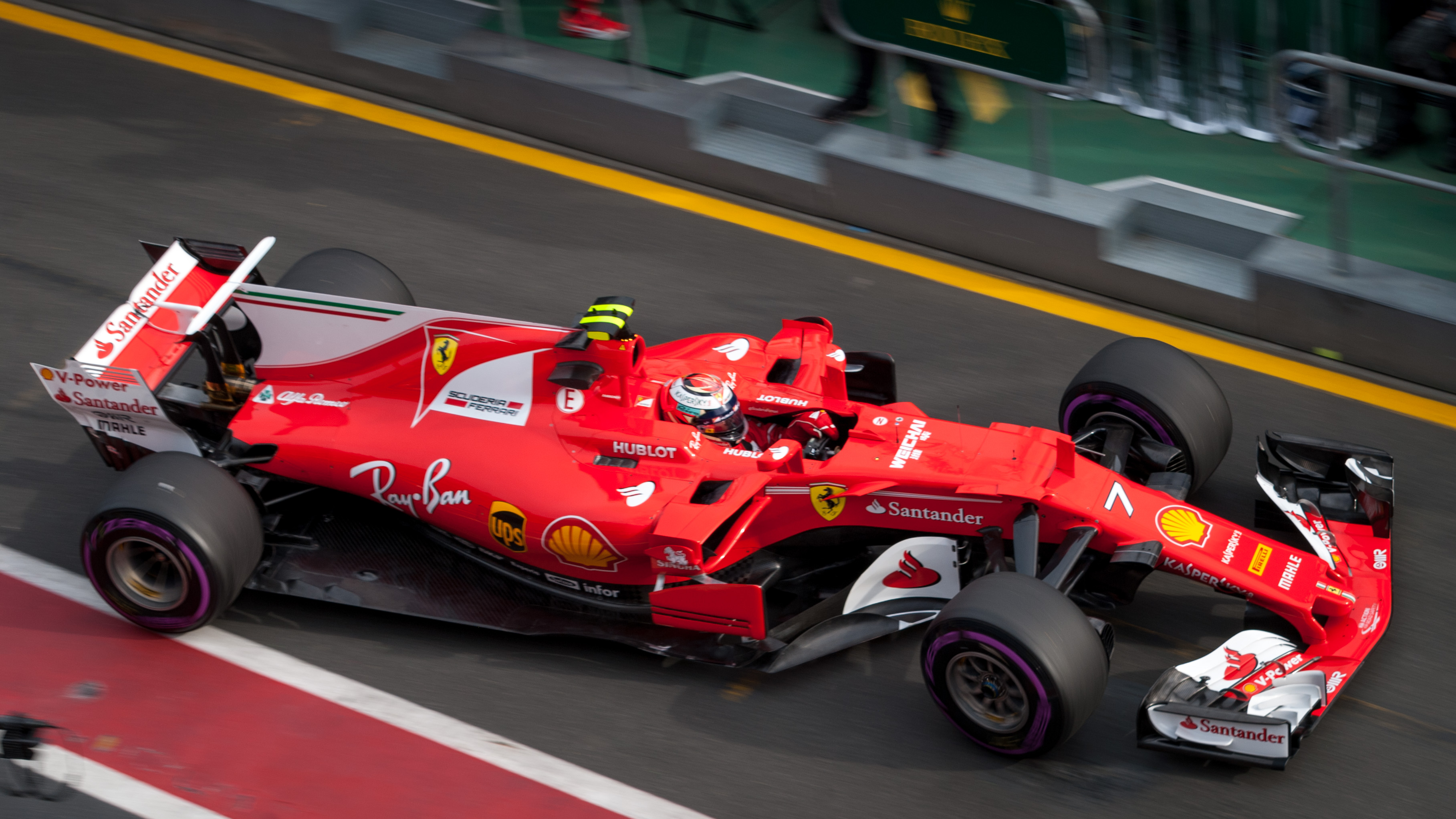 Jake Archibald, CC BY 2.0, Wikimedia Commons
Jake Archibald, CC BY 2.0, Wikimedia Commons
Mercedes F1 W05 Hybrid
The W05 was Mercedes’ first hybrid-powered F1 car. It was also the first car to win them a Championship.
This hot rod was powered by turbocharged hybrid V-6 engine that could pump out more than 800 horsepower. The car also had an electric motor with an ERS system that boosted its power.
 Morio, CC BY-SA 4.0, Wikimedia Commons
Morio, CC BY-SA 4.0, Wikimedia Commons
Mercedes F1 W05 Hybrid (cont’d)
With the W05, Mercedes won their first-ever Constructors and Drivers Championships in 2019.
That year, the car won 16 out of 19 races, and got 31 podiums, 18 pole positions, and 12 fastest lap awards. All in all, it’s one of the most successful F1 cars ever made.
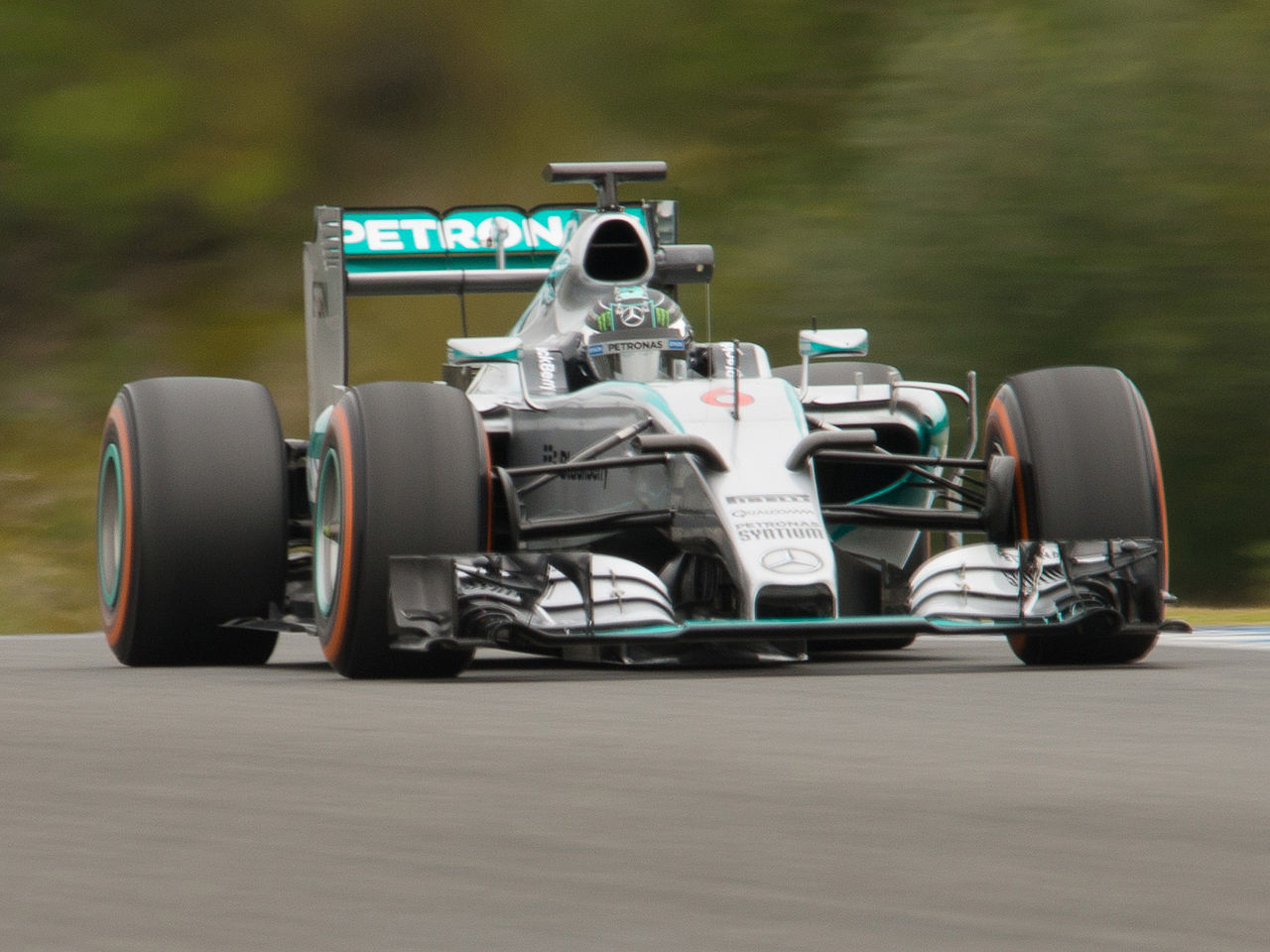 Michael Elleray, CC BY 2.0 , Wikimedia Commons
Michael Elleray, CC BY 2.0 , Wikimedia Commons
Mercedes-AMG W11 EQ Performance
By the time the W11 hit the track, Mercedes has cemented their place as a top contender in Formula 1. But this car was a step above the cut and featured innovative motorsport technologies that were created for the 2020 F1 season.
Among those innovative features was a turbo-hybrid V-6 that could produce a whopping 1,025 horsepower.
Mercedes-AMG W11 EQ Performance (cont’d)
With the W11, Mercedes also unveiled a new dual axis steering system that was met with some controversy. The system lets the driver change the angle of the front wheels by pushing or pulling the steering wheel.
Changing the angle of the wheels increased grip on certain areas of the track, boosting the car’s overall performance. Lewis Hamilton went on to win his 7th World Drivers’ Championship in the W11, and the car won 13 out of 17 races.
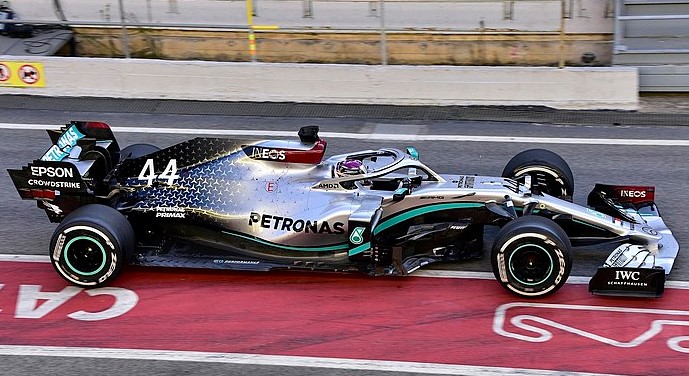 Artes Max from Spain, CC BY-SA 2.0, Wikimedia Commons
Artes Max from Spain, CC BY-SA 2.0, Wikimedia Commons
Red Bull RB18
In the 2022 F1 season, the FIA set new regulations about aerodynamics. Designer Adrian Newey used the changes to his advantage and designed one of Red Bull’s greatest race cars to date.
The sheer downforce and modified suspension of the RB18 made it stick to the track and handle corners with quick precision.
Red Bull RB18 (cont’d)
The car was also powerful, featuring a turbocharged V-6 engine that cranks out 740 horsepower. The RB18 kicked Mercedes out of the top spot, winning the Constructors’ Championship.
Verstappen used the car to secure 16 Grand Prix wins while Perez brought home two. All in all, the RB18 is one of Red Bull’s most dominant cars ever made, and has earned it's place in the ranks of iconic F1 cars.


